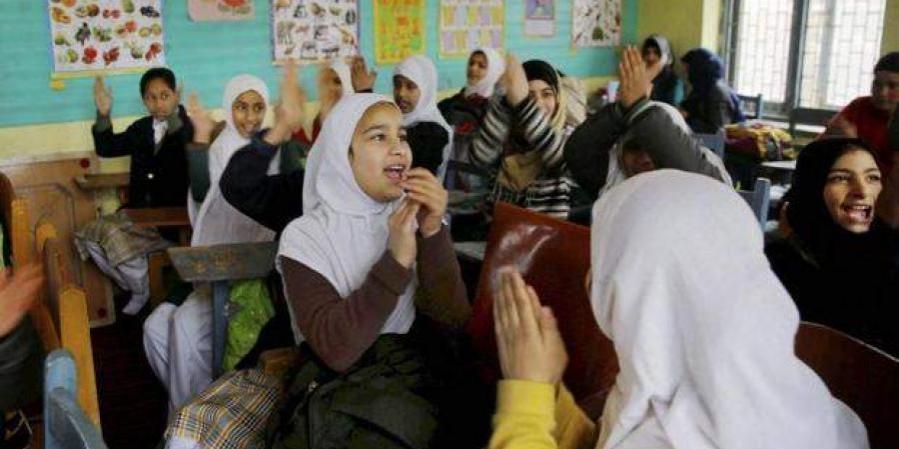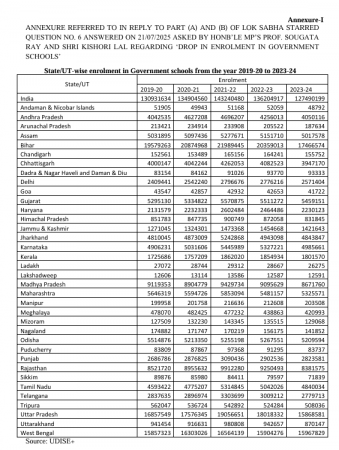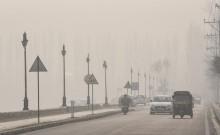
The Union Territory of Jammu and Kashmir has witnessed a steady decline in student enrollment in government schools over the past three years, reflecting a broader nationwide trend.
In a written reply in the Lok Sabha, Minister of Education Dharmendra Pradhan informed that the total number of students enrolled in government schools across India fell from 143.24 crore in 2021–22 to 127.49 crore in 2023–24—marking a sharp drop of nearly 15.75 crore students within just two years.
In Jammu and Kashmir, enrollment in government schools stood at 1,271,045 in 2019–20, increased to 1,324,301 in 2020–21, and peaked at 1,473,368 in 2021–22. Since then, the number has declined to 1,454,668 in 2022–23 and further to 1,421,643 in 2023–24. While still represents a net gain of about 1.5 lakh students over five years, the downward trend in the last two academic years is evident.
The drop from 1,473,368 to 1,421,643 indicates that 51,725 students have exited the government school system in Jammu and Kashmir over the past two years.

The central government acknowledged this trend but clarified that, since education falls under the Concurrent List of the Constitution, the primary operational responsibility rests with the respective states and Union Territories.
Efforts to curb declining enrollment
To address the fall in enrollment, the government highlighted several interventions being implemented under the centrally sponsored Samagra Shiksha Abhiyan and the PM POSHAN scheme, which provides midday meals from Balvatika (pre-primary) to Class 8. Central assistance to states and UTs under Samagra Shiksha for the financial year 2024–25 amounts to ₹34,458 crore.
Among the key initiatives cited are:
- Setting up and strengthening of schools up to the senior secondary level
- Upgrading Kasturba Gandhi Balika Vidyalayas (KGBVs) to Class 12
- Provision of residential hostels under the PM-JANMAN and DAJGUA schemes
- Transport and seasonal hostel allowances
- Vocational education and ICT (Information and Communication Technology) tools
- Free textbooks, uniforms, and inclusive education for children with special needs
The ministry also noted that a significant shift occurred in 2022–23 with the adoption of a student-level data collection system through UDISE+, as part of the National Education Policy (NEP) 2020. While this change has improved data transparency and granularity, it means that the latest figures cannot be directly compared with aggregate enrollment data from previous years.
Nonetheless, the trend of declining student enrollment in government schools remains a matter of concern in Jammu and Kashmir, where public education continues to serve as the backbone for rural and economically weaker sections. The enrollment drop highlights the growing challenges faced by the government schooling system, especially in a region already grappling with infrastructure deficits and sociopolitical instability.

















